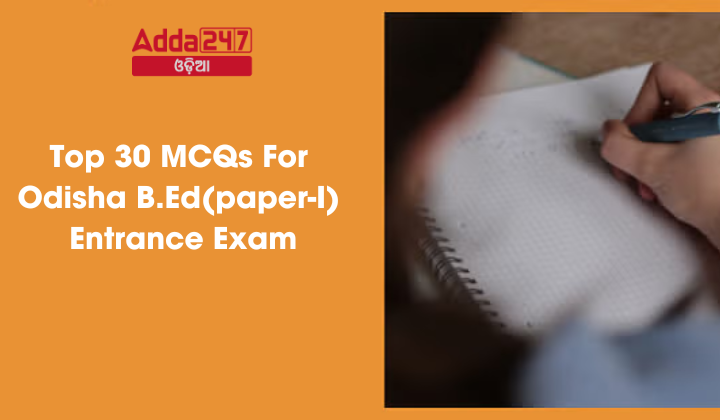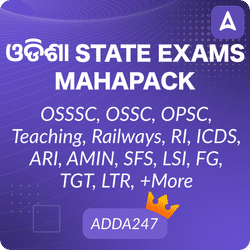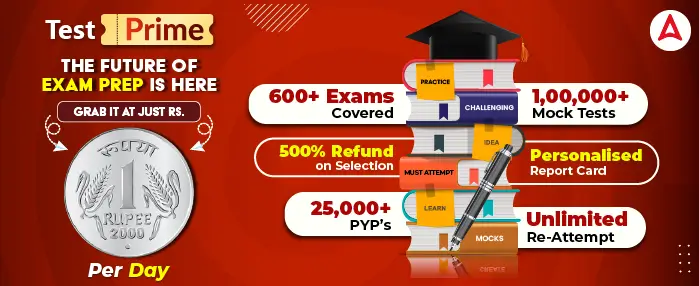The Odisha B.Ed entrance exam is a competitive test for aspiring teachers in Odisha, India. Paper-I of this exam often includes questions on general awareness, reasoning, and teaching aptitude. Here are the top 30 multiple-choice questions (MCQs) to help you prepare for the Odisha B.Ed entrance exam.
Top 30 MCQs For Odisha B.Ed(paper-I) Entrance Exam
- To accustom oneself to a foreign climate
(a) Adapt
(b) Adopt
(c) Accustom
(d) Acclimatise
Ans:- (d) Acclimatise - One who knows everything
(a) Literate
(b) Scholar
(c) Omnipotent
(d) Omniscient
Ans:- (d) Omniscient - Detailed plan of journey
(a) Travelogue
(b)Travel kit
(c) Schedule
(d) Itinerary
Ans:- (d) Itinerary - Giving undue favours to one’s own kith and kin
(a) Nepotism
(b) Favouritism
(c) Worldliness
(d) Corruption
Ans:- (a) Nepotism - Hater of learning and knowledge
(a) Misologist
(b) Bibliophile
(c) Misogynist
(d) Misanthropist
Ans:- (a) Misologist - A person interested in reading books and nothing else
(a) Bookkeeper
(b) Scholar
(c) Bookworm
(d) Student
Ans:- (c) Bookworm - What is the primary role of the State Board of Teacher Education (SBTE)?
(a) To conduct examinations for higher education
(b) To oversee the conduct of pre-service and in-service teacher education programs
(c) To provide financial aid to students
(d) To develop school infrastructure
Answer: (b) To oversee the conduct of pre-service and in-service teacher education programs - How does the SBTE align teacher education programs?
(a) By creating new textbooks
(b) By aligning with the National Council for Teacher Education (NCTE) guidelines
(c) By setting up schools directly
(d) By managing teacher appointments
Answer: (b) By aligning with the National Council for Teacher Education (NCTE) guidelines - Which agency is primarily responsible for conducting pre-service and in-service teacher training at the district level?
(a) State Education Department
(b) District Institutes for Education and Training (DIETs)
(c) National Council for Teacher Education (NCTE)
(d) Block Resource Centers (BRCs)
Answer: (b) District Institutes for Education and Training (DIETs) - What is one of the key responsibilities of DIETs?
(a) Managing school budgets
(b) Organizing professional development programs for teachers
(c) Setting national education policies
(d) Recruiting teachers for schools
Answer: (b) Organizing professional development programs for teachers - In terms of curriculum development, what role does SBTE play?
(a) Developing new curriculums independently
(b) Monitoring and modifying existing curriculums
(c) Approving textbooks
(d) Conducting student assessments
Answer: (b) Monitoring and modifying existing curriculums - How do DIETs contribute to action research?
(a) By implementing nationwide research studies
(b) By initiating local action research programs to improve teaching practices
(c) By publishing research journals
(d) By conducting international research collaborations
Answer: (b) By initiating local action research programs to improve teaching practices - What is the relationship between SBTE and SCERTs?
(a) SBTE provides funding for SCERTs
(b) SBTE oversees and ensures the quality of teacher education programs conducted by SCERTs
(c) SBTE and SCERTs operate independently without coordination
(d) SBTE conducts research for SCERTs
Answer: (b) SBTE oversees and ensures the quality of teacher education programs conducted by SCERTs - Which level of teacher training do DIETs primarily focus on?
(a) University-level training
(b) Pre-service and in-service training for primary to secondary school teachers
(c) Training for school administrators
(d) Training for special education teachers
Answer: (b) Pre-service and in-service training for primary to secondary school teachers - How does SBTE contribute to maintaining educational uniformity across state boards?
(a) By implementing uniform teaching methods
(b) By providing consistent guidelines and standards for teacher education
(c) By standardizing school facilities
(d) By appointing teachers directly
Answer: (b) By providing consistent guidelines and standards for teacher education - What role do DIETs play in the development of teaching materials?
(a) They develop national teaching materials
(b) They tailor teaching materials and resources to the local context
(c) They purchase teaching materials from external suppliers
(d) They oversee the distribution of teaching materials to other districts
Answer: (b) They tailor teaching materials and resources to the local context - What is the missing number in the series: 13, 17, ?, 25, 29?
A) 19
B) 21
C) 22
D) 23
ANS:- B) 21
Sol:- To identify the pattern in the series, let’s examine the differences between consecutive numbers:
The difference between 17 and 13 is 17 − 13 = 4
The difference between 29 and 25 is 29 − 25 = 4
It seems like the differences alternate between 4 Let’s continue this pattern:
The difference between the missing number and 17 should be 4.
Adding 4 to 17 gives us 17 + 4 = 21
Then, the difference between 21 and 29 is 29 − 21 = 4
Adding 4 to 25 gives us 25 +4 = 29
Therefore, the missing number in the series is 21 - What is the next number in the series: 1, 4, 9, 16, 25, …?
A) 36
B) 49
C) 64
D) 81
ANS:- A) 36
Sol:- The given series consists of perfect squares of consecutive natural numbers:
12 =1 (1 ×1)
22 = 4 (1 ×1)
32 = 9 (1 ×1)
42 = 16 (1 ×1)
52 = 25 (1 ×1)
To find the next number in the series, we square the next consecutive natural number:
62 = 36
Therefore, the next number in the series is 36 - What is the next number in the series: 1, 4, 9, 16, …?
A) 20
B) 24
C) 25
D) 28
ANS:- C) 25
Sol:- The given series consists of the squares of consecutive natural numbers:
1 = 12 (i.e. 1 ×1)
4 = 22 (i.e. 2 × 2)
9 = 32 (i.e. 3× 3)
16 = 42 (i.e. 4× 4)
To find the next number in the series, we square the next consecutive natural number:
25 = 52 (i.e. 5 × 5)
Therefore, the next number in the series is 25 - Complete the analogy:
3: 9:: 4:?
Options:
a) 8
b) 12
c) 16
d) 6
ANS:- b) 12
Sol:- The relationship between 3 and 9 is that 3 squared equals 9. Similarly, 4 squared equals 16. Therefore, the correct answer is 12 because it is the square of 4. - Complete the analogy:
5 : 25:: 6:?
Options:
a) 31
b) 36
c) 30
d) 29
ANS:- b) 36
Sol:- The relationship between 5 and 25 is that 5 squared equals 25. Similarly, 6 squared equals 36. Therefore, the correct answer is 36. - Complete the analogy:
8: 64:: 10:?
Options:
a) 100
b) 80
c) 120
d) 64
ANS:- a) 100
Sol:- The relationship between 8 and 64 is that 8 squared equals 64. Similarly, 10 squared equals 100. Therefore, the correct answer is 100. - Evaluate: (7 + 3) × (6 – 4)
a) 20
b) 14
c) 10
d) 8
ANS:- a) 20
Sol:- To evaluate the expression (7 + 3) × (6 – 4), we first perform the operations inside the parentheses:
(7 + 3) = 10
(6 – 4) = 2
Then, we multiply the results:
10 × 2 = 20
So, the correct answer is a) 20 - Evaluate: 8 ÷ (2 + 2) × 3
a) 3
b) 6
c) 9
d) 12
ANS:- b) 6
Sol:- To evaluate the expression 8÷(2+2)×3, we follow the BODMAS rule (Brackets, Orders, Division, Multiplication, Addition, Subtraction):
First, we perform the operations inside the parentheses:
2 + 2 = 4
Then, we perform division and multiplication from left to right:
8 ÷ 4 = 2
2 × 3 = 6
So, the correct answer is b) 6 - In a survey, 150 people were asked about their preferred mode of transportation. 80 people said they prefer cars, 70 people said they prefer bicycles, and 50 people said they prefer both cars and bicycles. How many people didn’t prefer either cars or bicycles?
Options:
a) 50
b) 20
c) 30
d) 40
ANS:- a) 50
Sol:- To find out how many people didn’t prefer either cars or bicycles, we need to subtract the number of people who prefer both cars and bicycles from the total number of people surveyed.
Given:
n(U) = 150 (Total number of people surveyed)
n(C) = 80 (Number of people who prefer cars)
n(B) = 70 (Number of people who prefer bicycles)
n(B∩C) = 50 (Number of people who prefer both cars and bicycles)
We can calculate the number of people who didn’t prefer either cars or bicycles as follows:
Number of people who didn’t prefer either = n(U) – [n(C) + n(B) – n(B∩C)]
=150−(80+70−50)
=150 – (150 – 50)
=150−100
=50
So, 50 people didn’t prefer either cars or bicycles. - How should a teacher be related to his peers?
a) Should copy other teacher’s style
b) Follow independent views
c) Should not intervene in other’s work
d) Suggest each other the effective ways to teach
Ans: d) Suggest each other the effective ways to teach - A teacher should encourage the students to _____________________________.
a) Score best grades in the class
b) Improve their own capabilities
c) Obey teacher’s command
d) Submit homework on time
Ans: a) Score best grades in the class - How can a teacher develop creativity in himself and the learners?
a) By giving new up-to-date information
b) By playing thought-provoking games
c) By praising any creative work
d) Set new tasks
Ans: b) By playing thought-provoking games - What is the best way for a teacher to resolve problems in a class?
a) Ask for other teacher’s opinion
b) Depends on one’s own opinion
c) Think on suggestions offered by the children and implement the good ones
d) Use the view that the Principal gives
Ans: c) Think on suggestions offered by the children and implement the good ones. - How would you make your students independent?
a) Give responsibility to everyone
b) Giving orders and expecting obedience
c) Ignoring their petty fights
d) Solving their problems for them
Ans: a) Give responsibility to everyone










